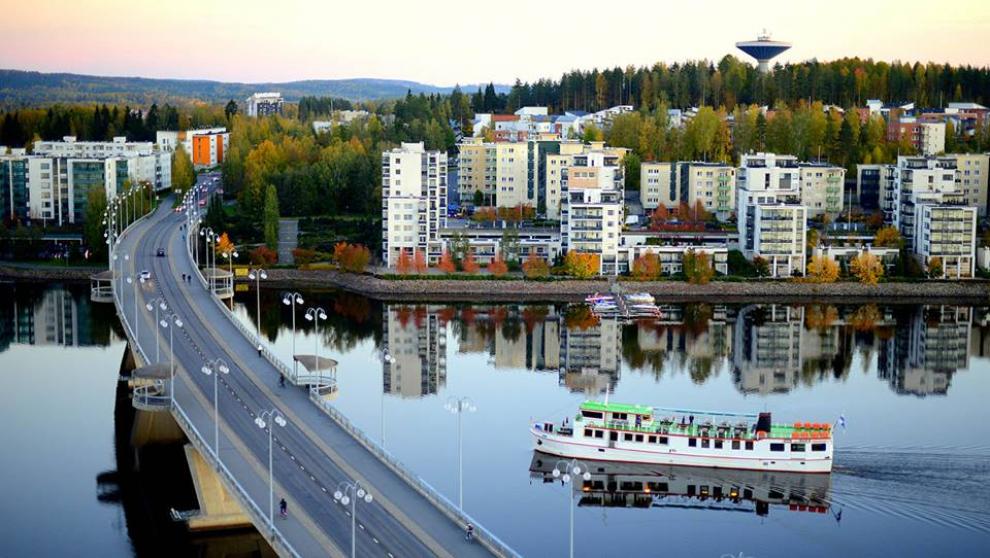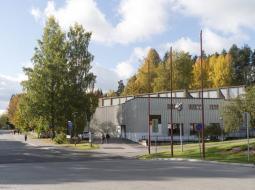Thessaloniki gets ready for its metro launch in November
The underground rapid transit lines have been under construction for almost two decades due to various project delays
 TheMayor.EU logo
TheMayor.EU logo 
According to the oldest discovered taxation documents, there were seven estates on the Jyväskylä region in 1539. The estate of Mattila alone possessed the areas stretching from the village of Keljo to the villages of Vesanka and Palokka. The oldest estate in Jyväskylä continuously held by the same family is the estate of Lahti, which emerged when the estate of Mattila was split between two brothers in 1600. The history of the estate of Lahti and the family of Lahti have had a significant impact on the development of Jyväskylä region.
On 22 March 1837 was founded the City of Jyväskylä, when Emperor of Russia and Grand Duke of Finland, Nicholas I of Russia, signed the charter of the city and the infrastructure was essentially built from scratch. At the times Finnish military battalion participated under his rule in military operations against the Polish November Uprising and later in Hungary, Turkey and Bessarabia (today Moldova). While Nicholas I of Russia abolished many autonomous areas, it has been argued that the loyalty of the Finnish military influenced his approach towards Finnish autonomy. The original town was built between Lake Jyväskylä (which is connected to Lake Päijänne) and the Jyväskylä ridge.
The creation of schools in the 1850-60 proved to be the most important step in regard to the future development of Jyväskylä. The first three Finnish-speaking schools in the world were founded in Jyväskylä, the Lycée in 1858, the Teachers’ College in 1863, and the Girls’ School in 1864.
In the early 20th century, Jyväskylä expanded several times. Most of modern day Jyväskylä was built after the Continuation War, when refugees from Karelia and other parts of Finland moved to the city. During the 21st century Jyväskylä has grown fast, with over 1000 new inhabitants every year. In 1993 Säynätsalo was consolidated with Jyväskylä and in January 2009 the same happened to Jyväskylän maalaiskunta and Korpilahti.
Jyväskylä is a city and municipality located in the western part of the Finnish Lakeland, 130 km north-east from Tampere. It is the largest city in the region of Central Finland and on the Finnish Lakeland. Jyväskylä has a population of 141,374 (31 January 2019)
The Jyväskylä sub-region includes Jyväskylä, Hankasalmi, Laukaa, Muurame, Petäjävesi, Toivakka, and Uurainen.
Jyväskylä is one of Finland's fastest growing centres of business. International growth enterprises, start-up companies and new innovation platforms – Kangas, Hippos and Kukkula – provide a sustainable foundation for flourishing business activity. Jyväskylä can offer enterprises skilled and highly educated personnel.
The city is characterised by cutting-edge expertise in digitalization, cyber security and the bio-economy, as well as in sport, wellness and healthcare. These strengths are backed by multidisciplinary research and education of the very highest standard. Among others, the local region is home to 500 ICT companies and the world's leading supplier of technologies, automation and services for the pulp, paper and energy industries, Valmet Corporation.

The Alvar Aalto Museum and the Museum of Central Finland form a center of culture in the immediate vicinity of the historical campus of the University of Jyväskylä. Both museums are designed by functionalist Alvar Aalto.
The Alvar Aalto Museum displays the artist's most important work and design. The Museum of Central Finland specializes in cultural history. It serves both as the town museum of Jyväskylä and the provincial museum of Central Finland. In 2015 Alvar Aalto Foundation and the city of Jyväskylä launched an architect competition to connect the two museums.
Address: Vapaudenkatu №32, 40100 Jyväskylä